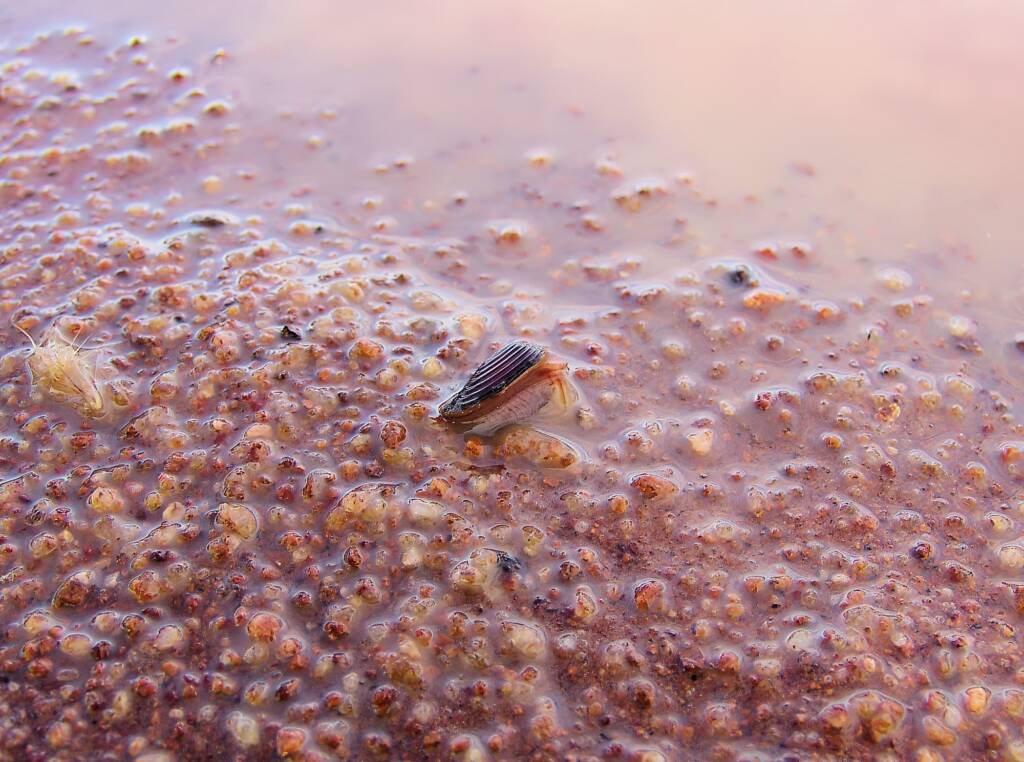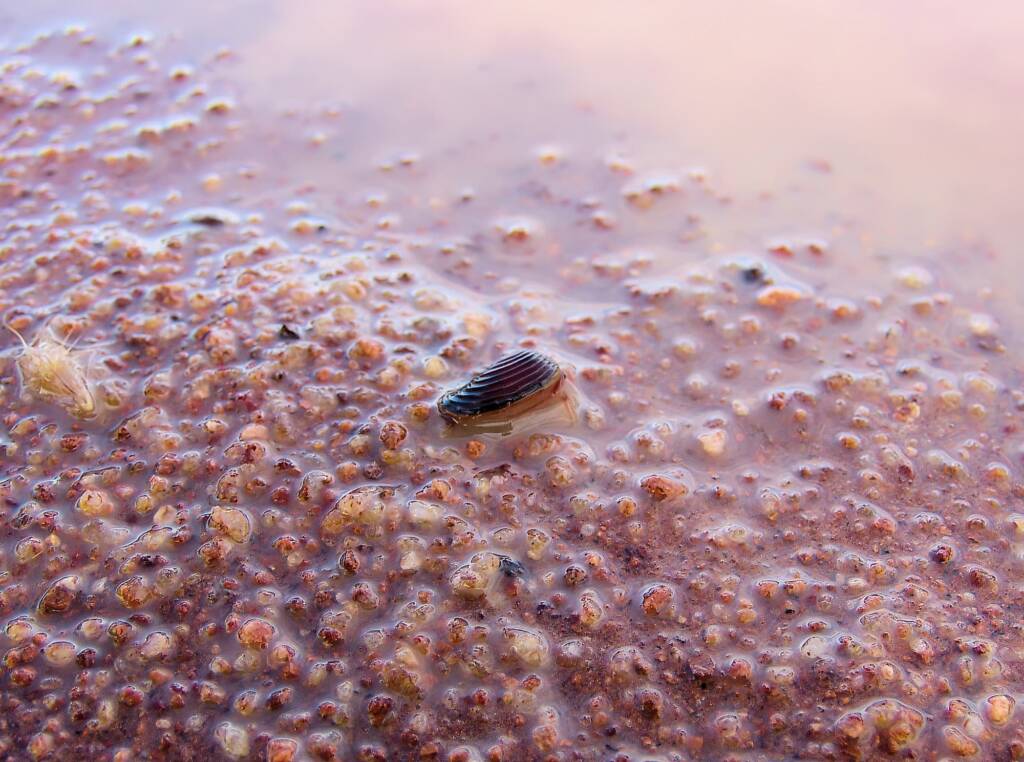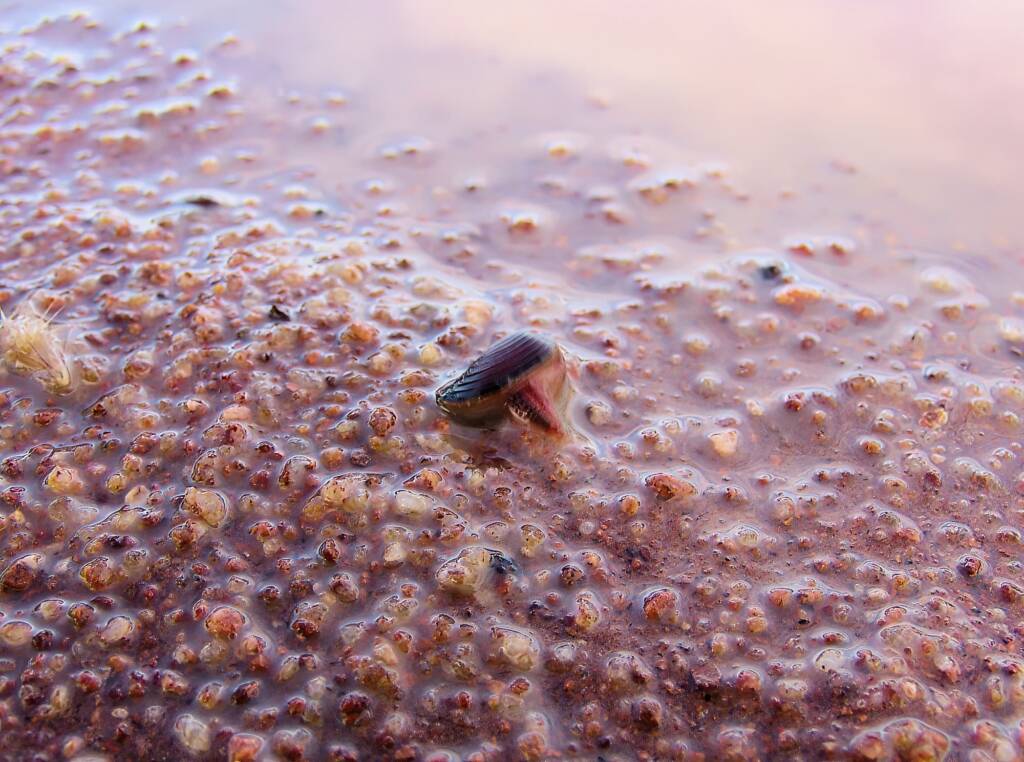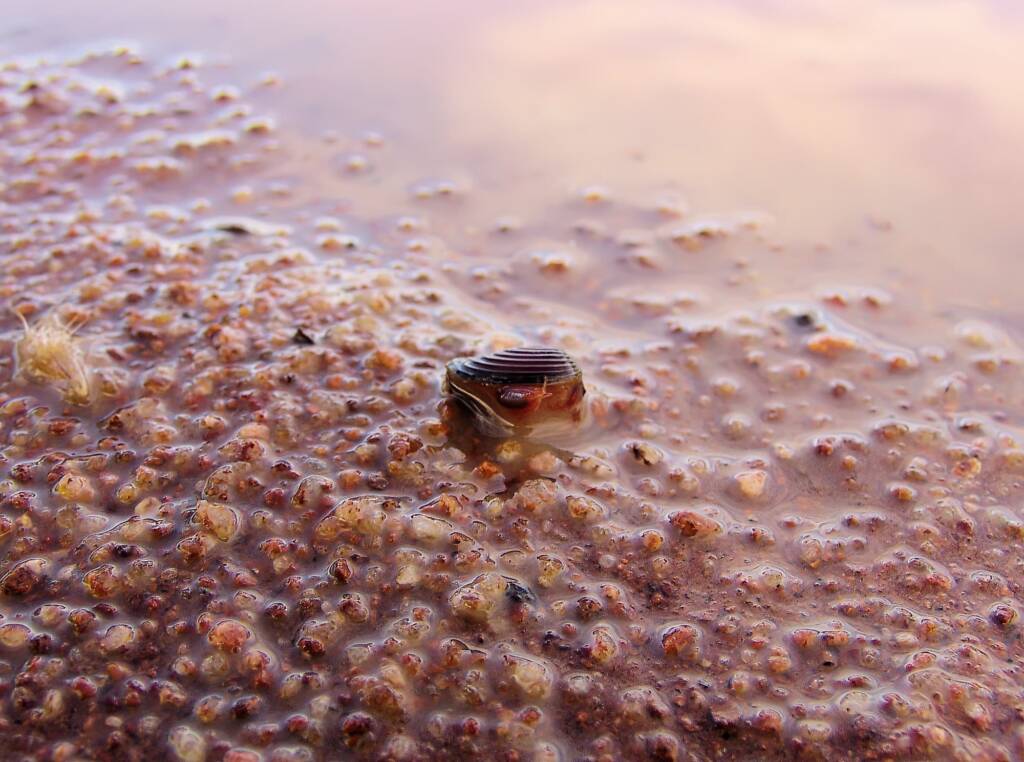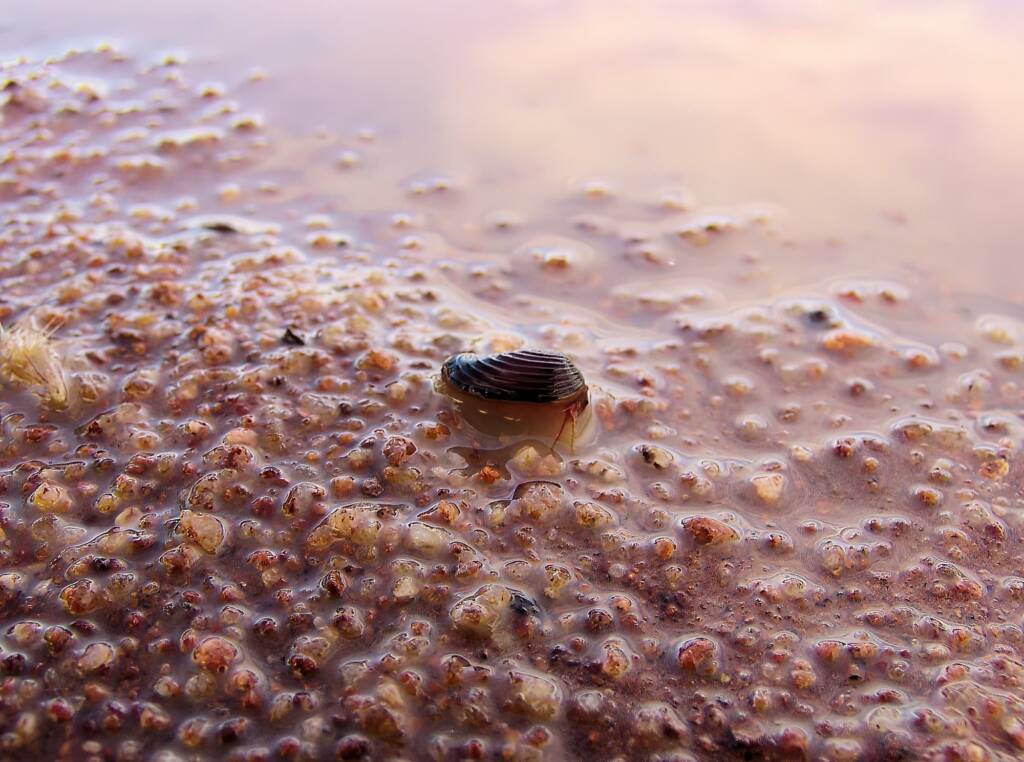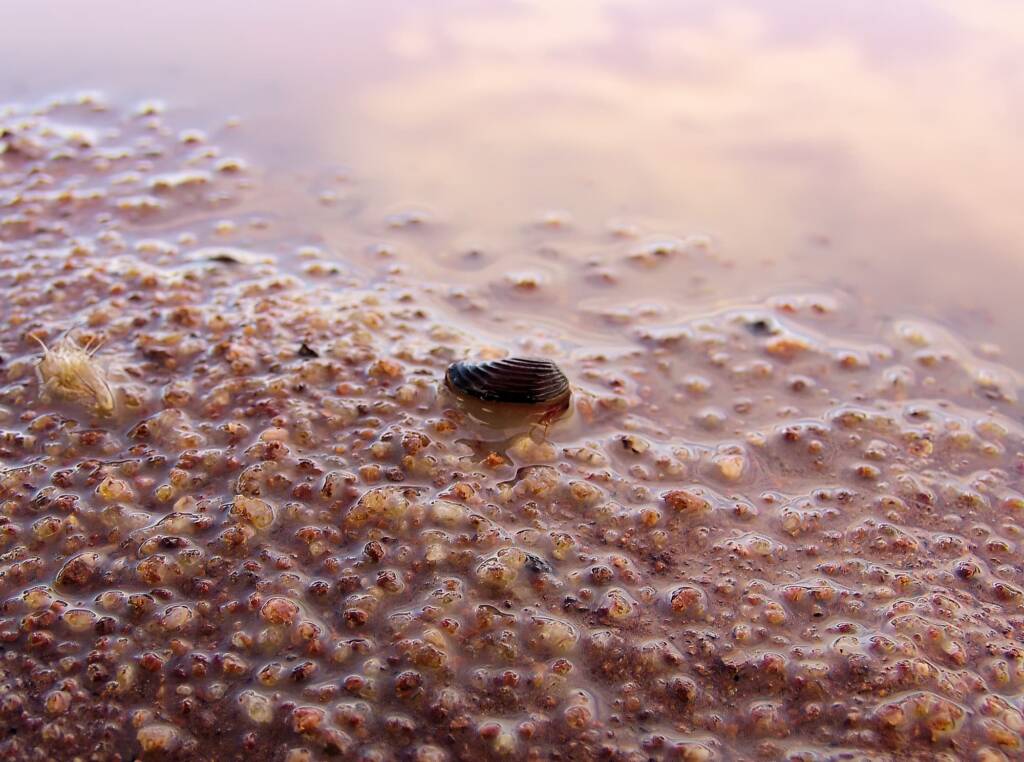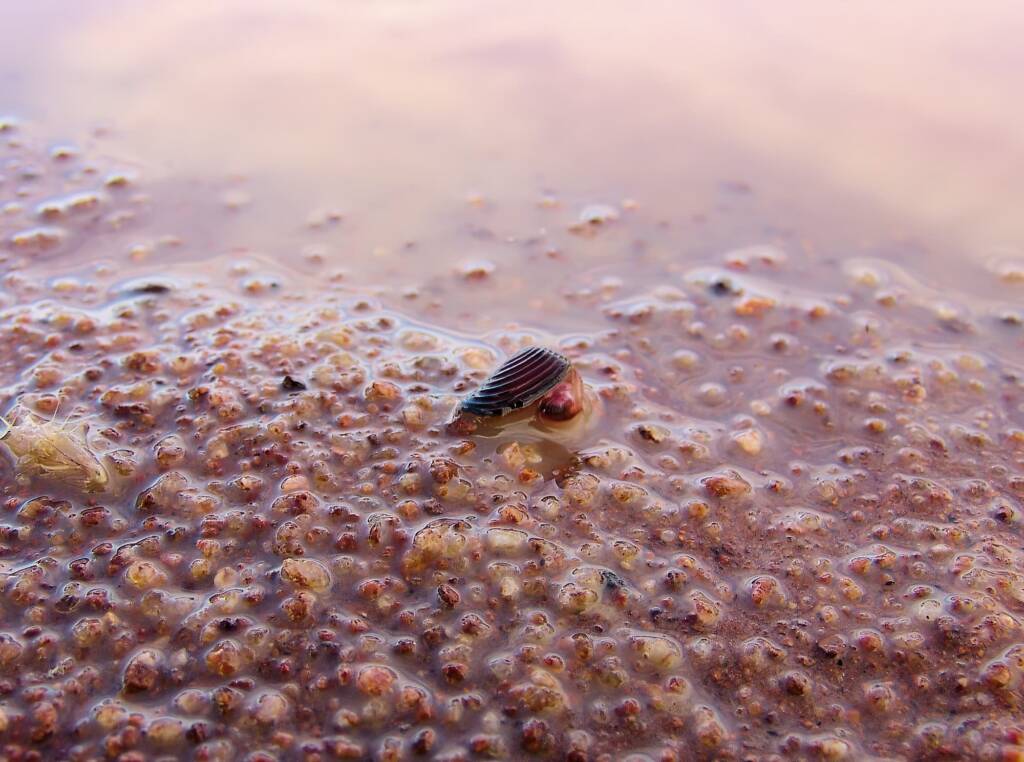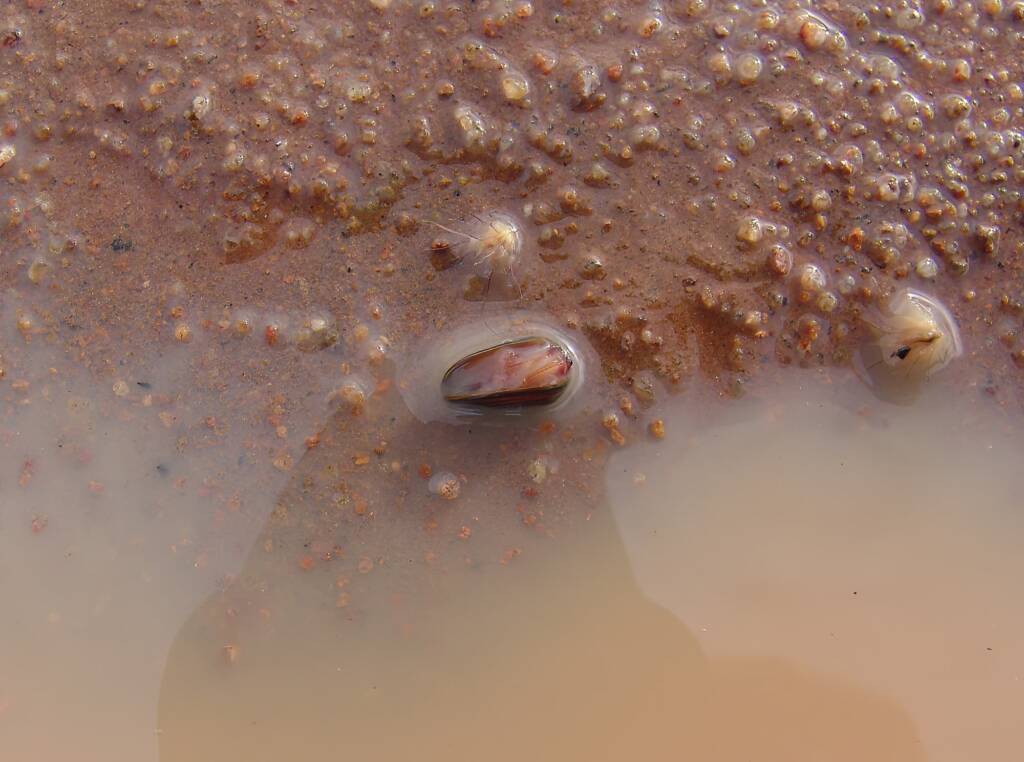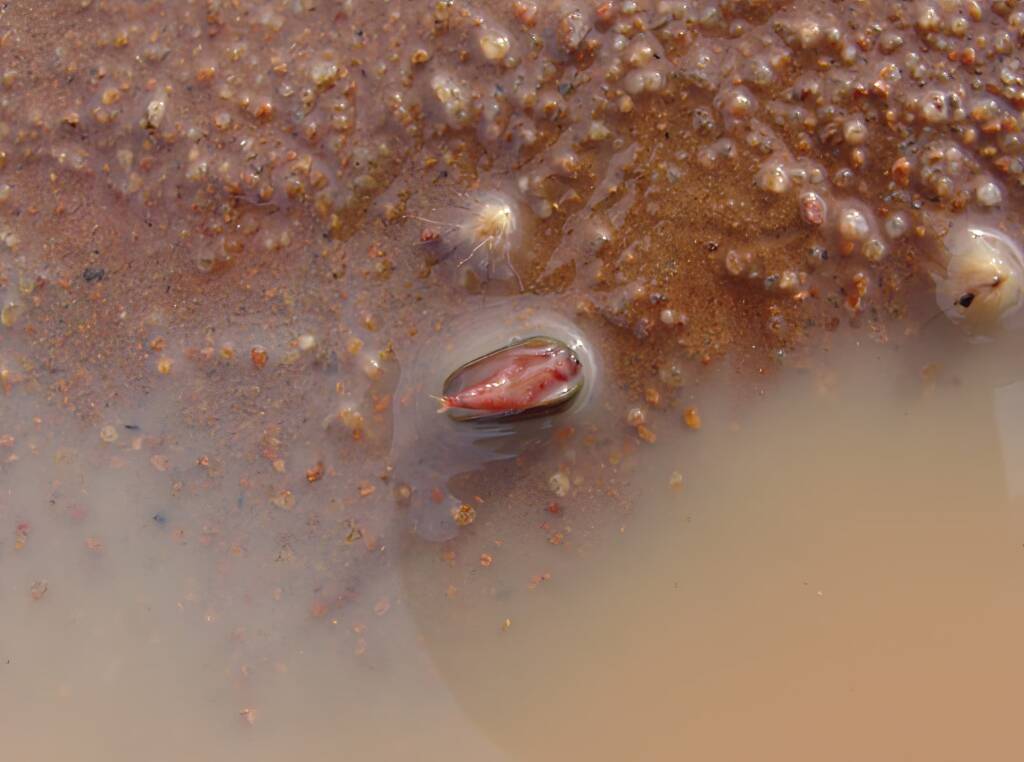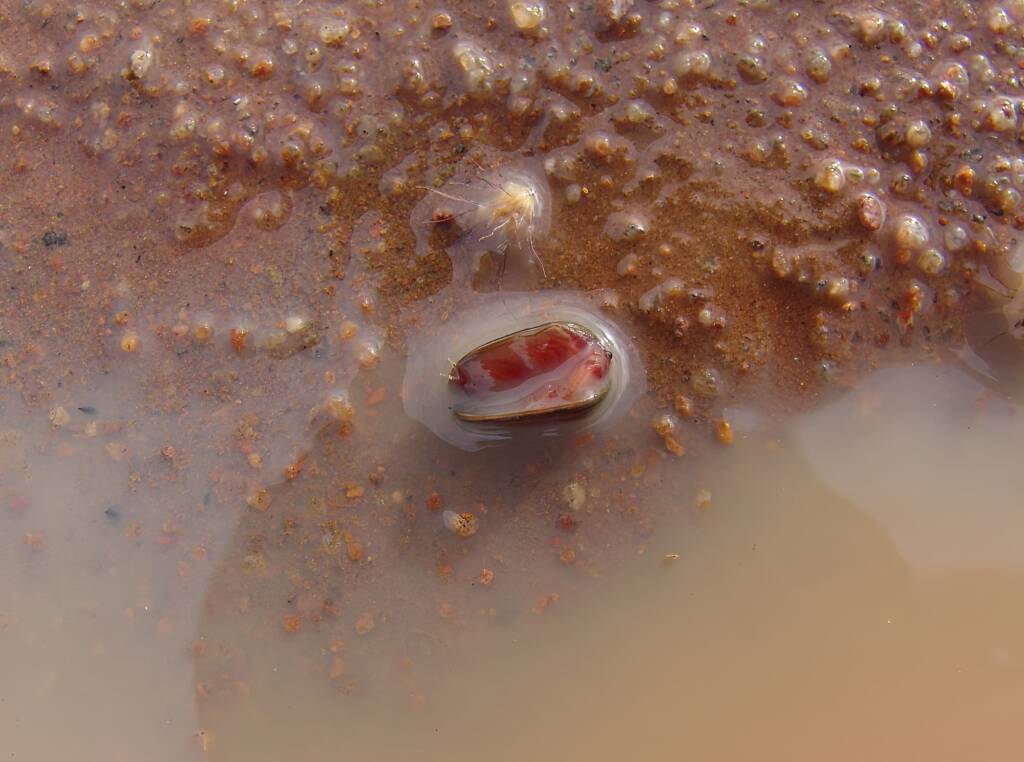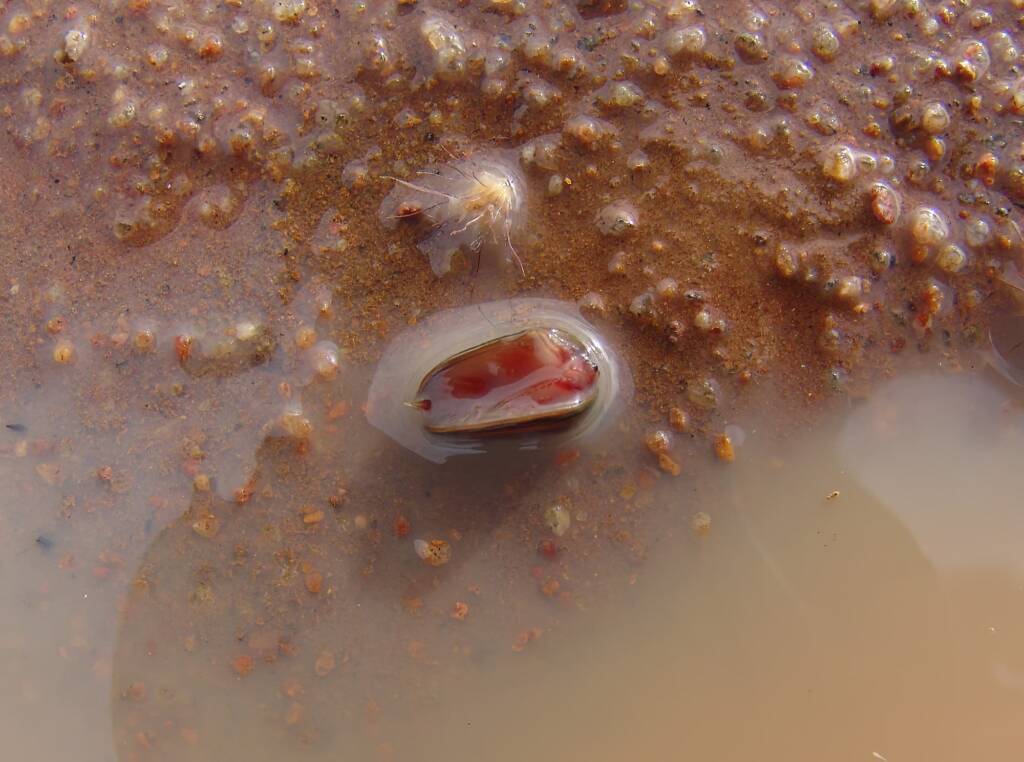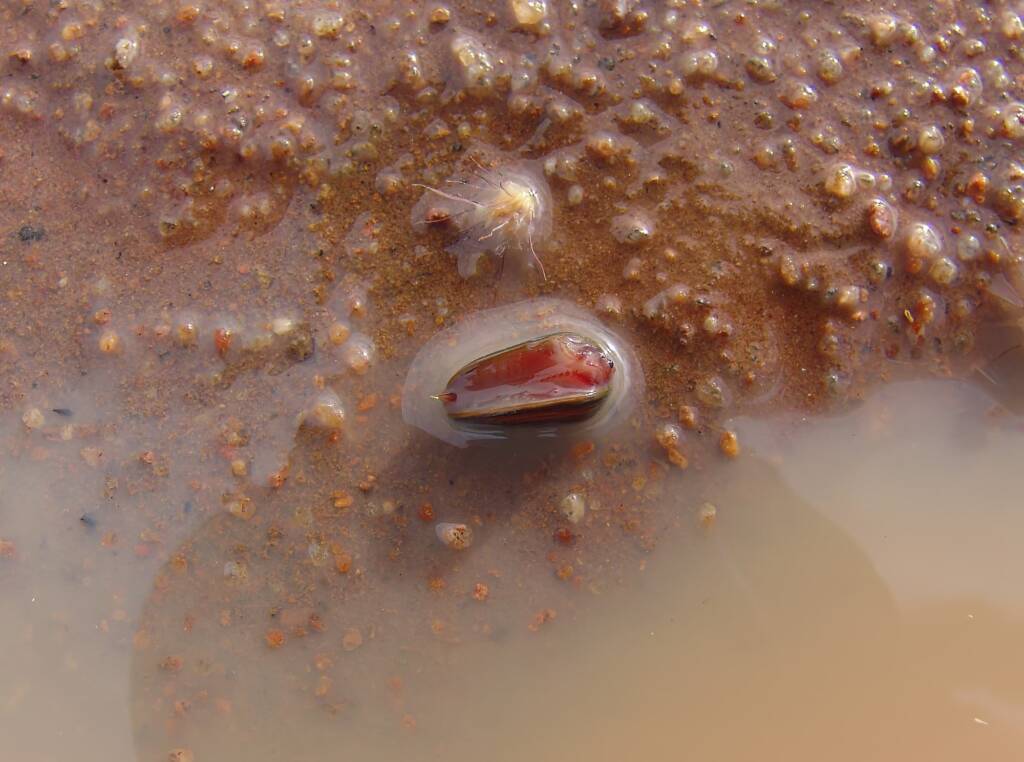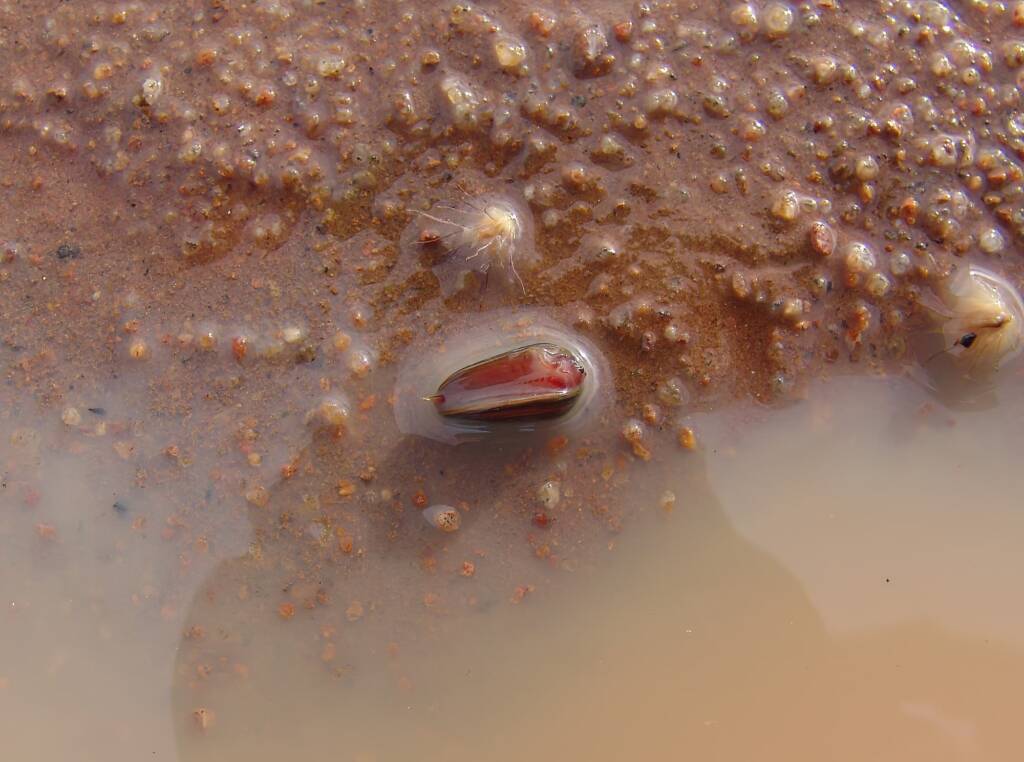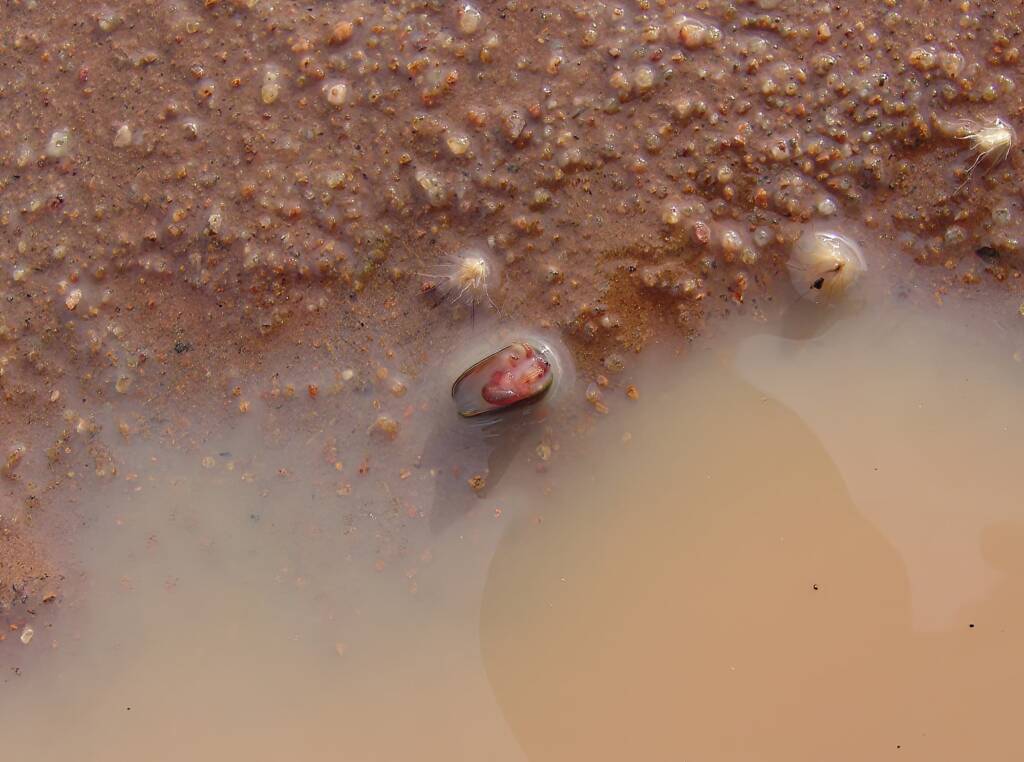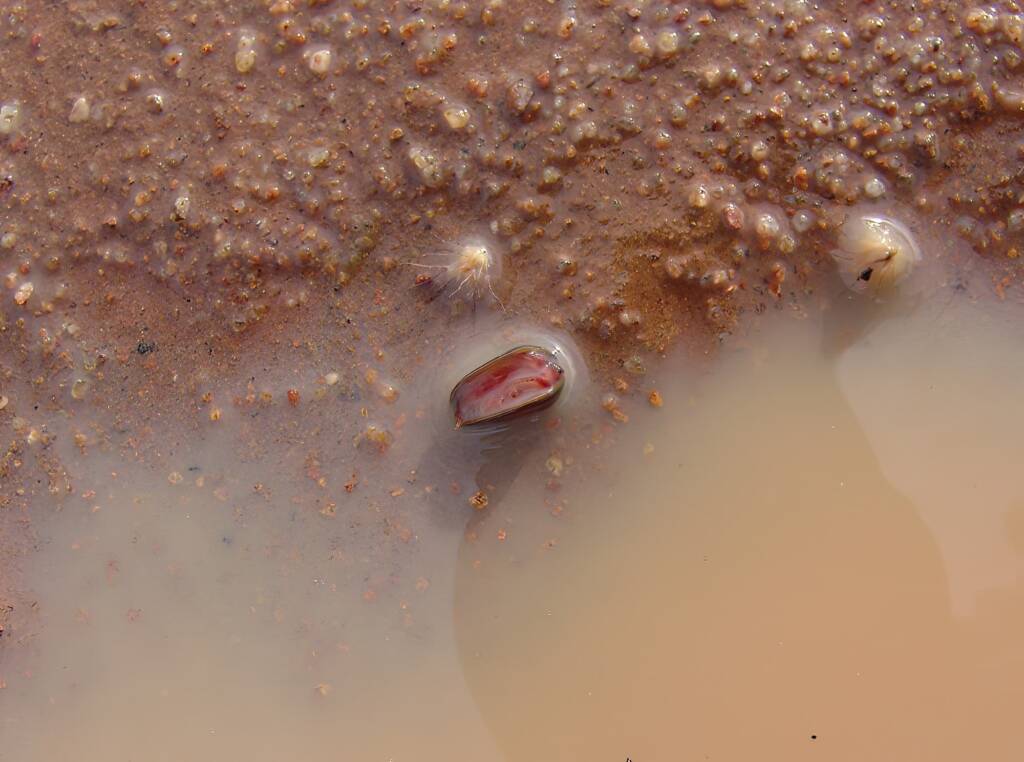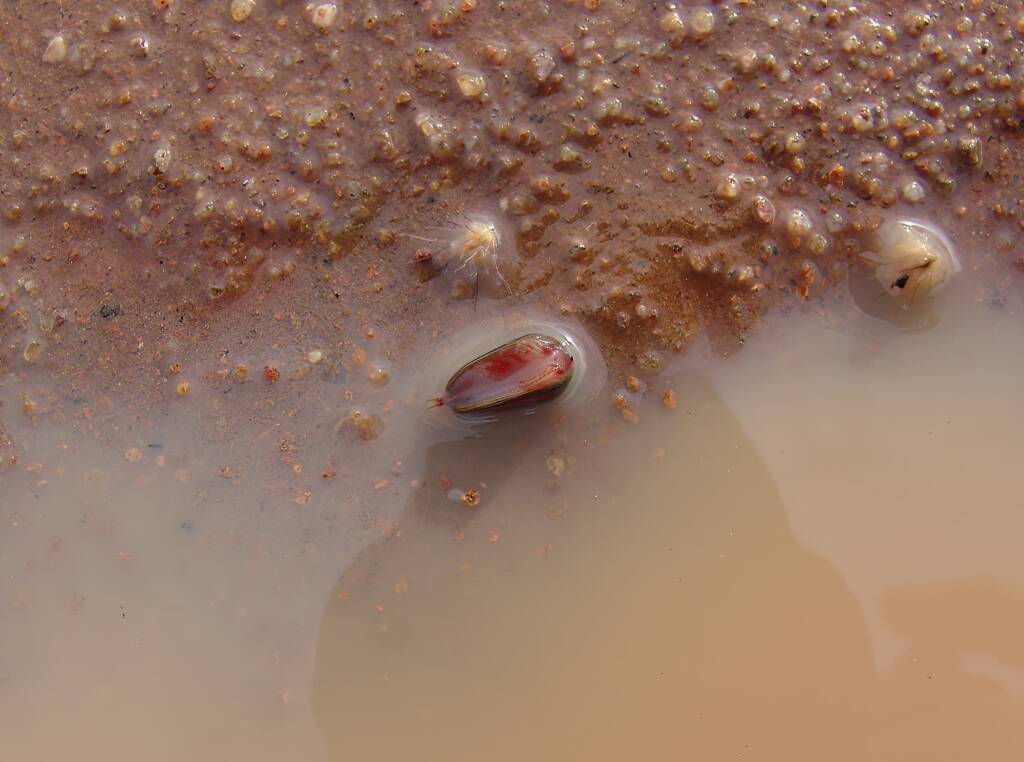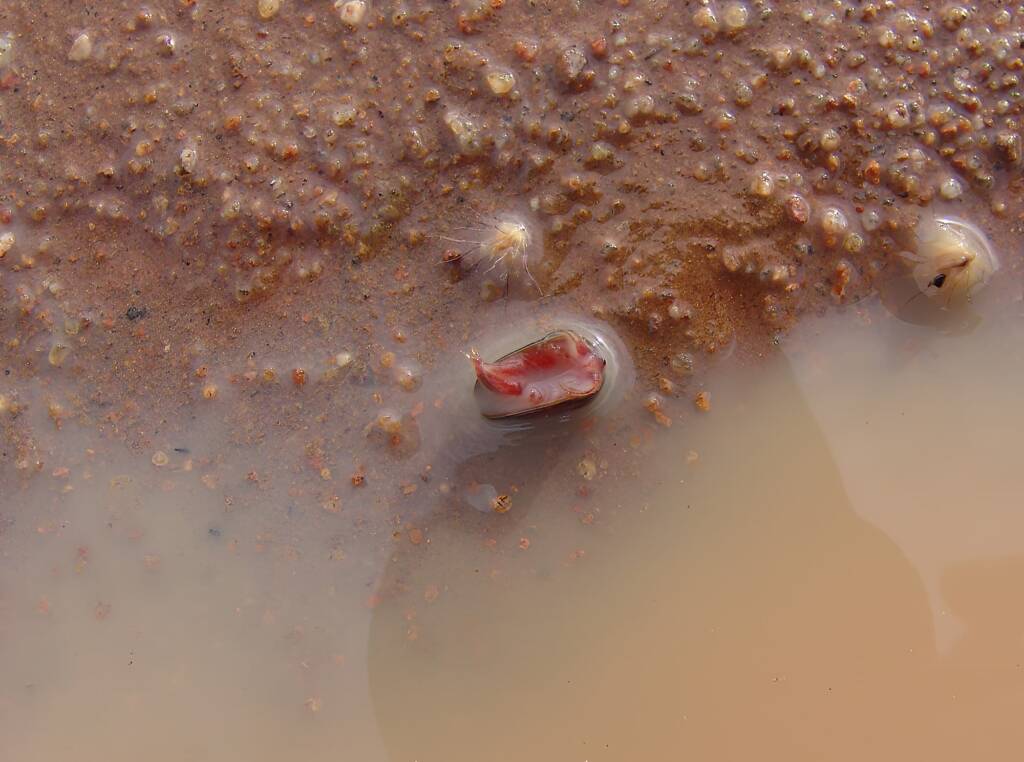Ilparpa Claypans FaunaClam Shrimp Desert Trilling Frog (Neobatrachus sudellae) Nankeen Kestrel (Falco cenchroides) Shield Shrimp (Triops australiensis) Toadhopper (Buforania crassa)
The ephemeral nature of the Ilparpa Claypans in Central Australia, often hides from the casual viewer the habitat that it provides to the small wildlife that live here. Aside from the desert frogs and the shield shrimps, there are smaller creature called the “clam shrimp”.
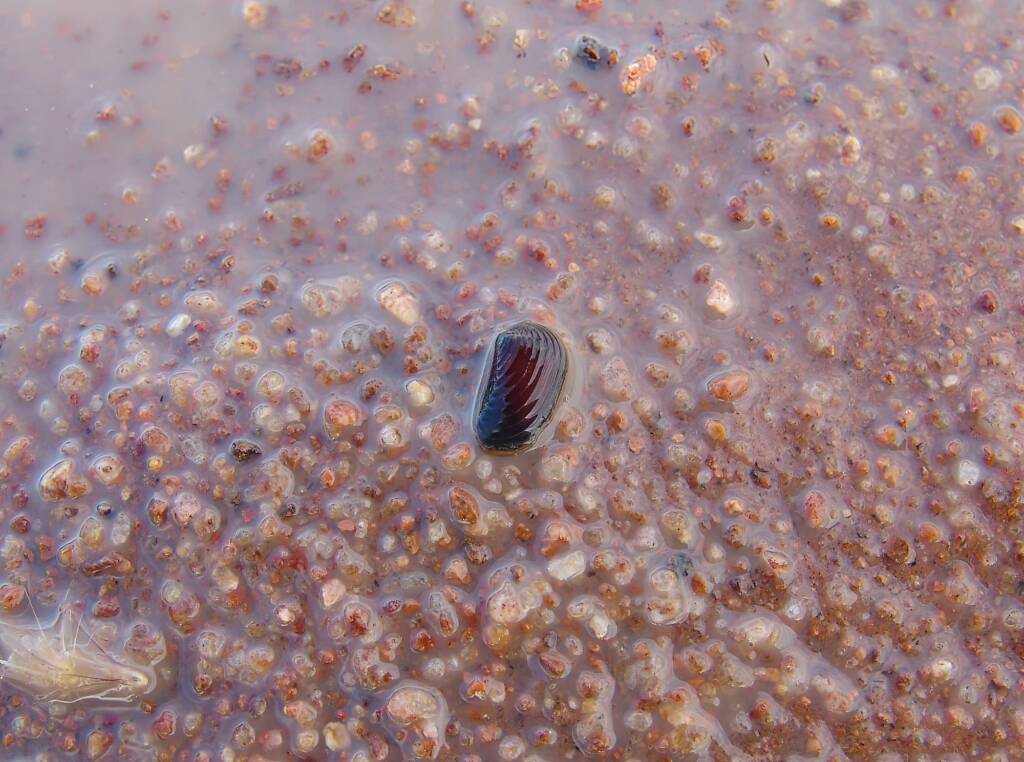
Often overlooked, especially when the larger shield shrimp appear in the same body of water, these small crustaceans were once classified in a single order, Conchostraca, that has since been proven to be paraphyletic. There are now recognised in 3 orders, 5 families and 19 genera. The orders Cyclestherida, Laevicaudata and Spinicaudata are sometimes regarded as suborders, along with the Cladocera, in the order Diplostraca.
These small Clam Shrimps are freshwater crustaceans whose body, as the common name suggest, is enclosed within a clam-like carapace or shell. The shell of some clam shrimp exhibits concentric growth rings, the carapace being opened and closed using a ligament.
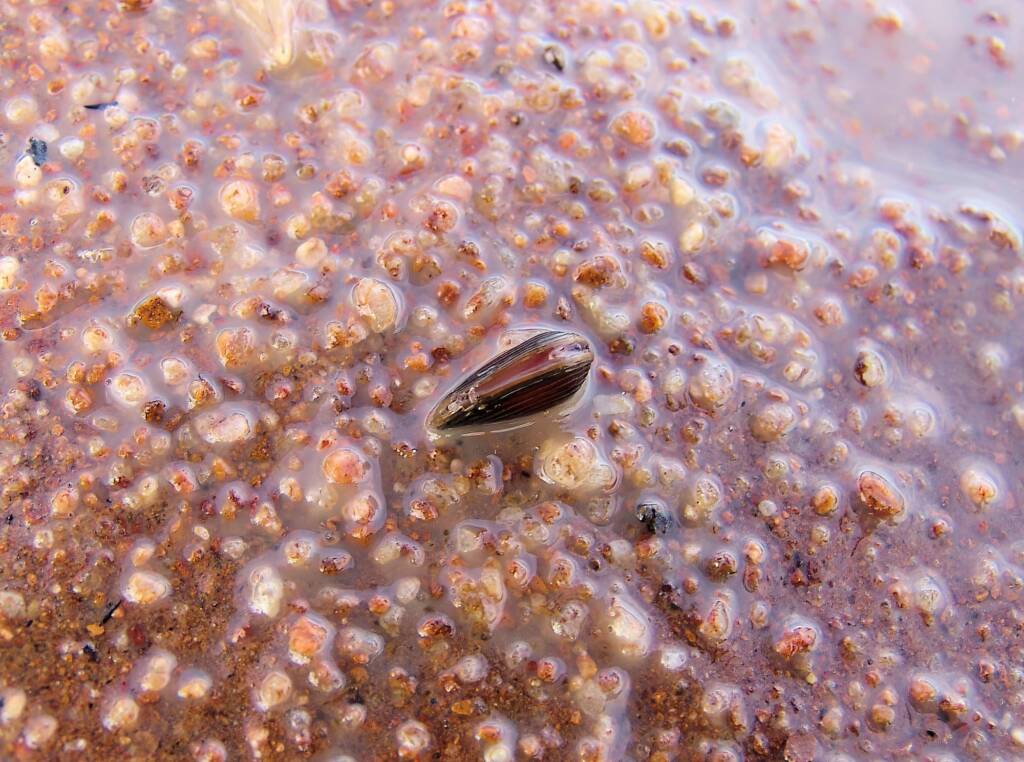
Within the carapace is the body of the clam shrimp, a small head and a large abdominal region. The head itself has a pair of compound eyes, a pair of short antennules, and a much longer pair of antennae covered with numerous bristles that, in addition to their legs, are used for swimming.
Varying in size from 2–17 mm, the clam shrimp’s carapace can range from translucent to dark brown in colour. Their bodies are typically translucent to pale, with some species being reddish due to haemoglobin in the haemolymph (body fluid).1
Not all “clam shrimp” are the same, in Australia there are at least eight genera, such as the genus Eulimnadia, that at time of writing have 15 recognised species found across Australian.2, 3
As well as the clam shrimp (Conchostraca), other common names include the fairy or brine shrimp (Anostraca) found at Uluru, and shield or tadpole shrimp (Notostraca).
Together they form a group belonging to the class Branchiopoda. The term Branchiopoda means ‘gill foot’, which refers to structures on the animals’ limbs through which they breathe.
Branchiopods live in temporary water bodies such as claypans, pools and lakes and in areas with low rainfall. Their eggs are able to survive periods of drought, being able to lie dormant until significant rainfall that will trigger them to hatch. Whilst in the egg stage, the drought resistant eggs can be blown by wind across the landscape, which accounts for the presence of shrimp on top of Uluru.
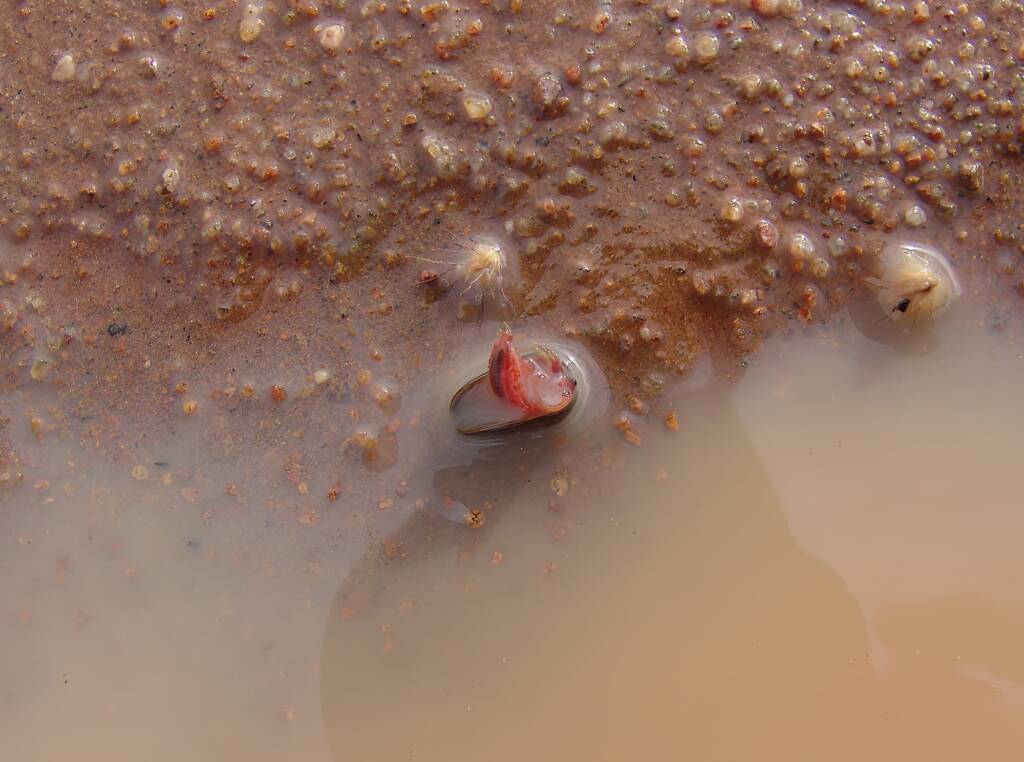
- Scientific classification
- Kingdom: Animalia
- Phylum: Arthropoda
- Subphylum: Crustacea
- Class: Branchiopoda
- Subclass: Phyllopoda
- Order: Diplostraca
- Suborder:
- Cyclestherida
- Laevicaudata
- Spinicaudata
- Cladocera
- Onychopoda
- Scientific classification
- Kingdom: Animalia
- Phylum: Arthropoda
- Subphylum: Crustacea
- Class: Branchiopoda
- Subclass: Phyllopoda
- Order:
- Cyclestherida
- Laevicaudata
- Spinicaudata
- Scientific classification
- Kingdom: Animalia
- Phylum: Arthropoda
- Subphylum: Crustacea
- Class: Branchiopoda
- Order: Spinicaudata
- Family: Limnadiidae
- Genus: Eulimnadia
Footnote & References
- Orders Cyclestherida, Laevicaudata and Spinicaudata – Conchostraca, Key to Australian Freshwater and Terrestrial Invertebrates, https://keys.lucidcentral.org/keys/v3/TFI/start%20key/key/crustacea%20key/Media/HTML/Conchostraca.html
- Little crustaceans of desert pools, by Professor Brian Timms, 2 February 2016, Australian Museum, https://australian.museum/blog-archive/amri-news/little-crustaceans-of-desert-pools/
- A partial revision of the Australian Eulimnadia Packard, 1874 (Branchiopoda: Spinicaudata: Limnadiidae), by Brian V Timms, 2016, Vol 4066, No 4, https://www.biotaxa.org/Zootaxa/article/view/zootaxa.4066.4.1
- Shrimps from Uluru, Australian Museum, 2 April 2019, https://australian.museum/learn/animals/crustaceans/shrimps-from-uluru/
- Brian’s Branchiopods – 24 June 2014, Alice Springs Field Naturalist Club Newsletter, September 2014, http://alicefieldnaturalists.org.au/14_09.pdf
Ilparpa Claypans FaunaClam Shrimp Desert Trilling Frog (Neobatrachus sudellae) Nankeen Kestrel (Falco cenchroides) Shield Shrimp (Triops australiensis) Toadhopper (Buforania crassa)
Ilparpa ClaypansIlparpa Claypans Fauna Ilparpa Claypans Flora Ilparpa Claypans Landscape
Northern TerritoryCentral Australia Aileron Alice Springs Binns Track Chambers Pillar Historical Reserve Ernest Giles Road Finke Gorge National Park Henbury Meteorites Conservation Reserve Hermannsburg Historic Precinct Ilparpa Claypans Karlu Karlu / Devils Marbles Conservation Reserve MacDonnell Ranges Mount Connor Newhaven Wildlife Sanctuary Owen Springs Reserve Red Centre Way Drive Standley Chasm Tnorala (Gosse Bluff) Conservation Reserve Uluru-Kata Tjuta National Park Watarrka National Park & Kings Canyon Wurre / Rainbow Valley




